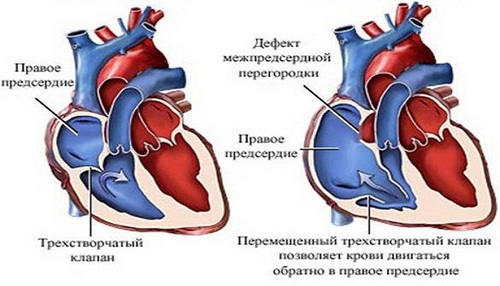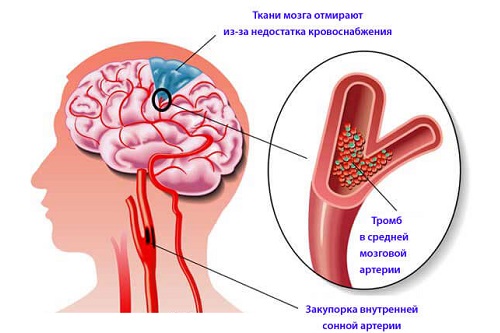In case of asymptomatic non-progressive aortic aneurysm, they are limited by dynamic observation of the vascular surgeon and x-ray control. To reduce the risk of possible complications, hypotensive and anticoagulant therapy is carried out, cholesterol levels are reduced.
Surgical intervention is indicated for abdominal aortic aneurysms with a diameter of more than 4 cm; aneurysms of the thoracic aorta with a diameter of 5.5-6.0 cm or with an increase in aneurysms of a smaller size by more than 0.5 cm in six months.
When aortic aneurysm is ruptured, the indications for emergency surgical intervention are absolute.
Surgical treatment of an aortic aneurysm consists in excision of the aneurysmally modified area of the vessel, suturing the defect or its replacement with a vascular prosthesis. Taking into account the anatomical localization, resection of the abdominal aortic aneurysm, thoracic aorta, aortic arch, thoraco-abdominal aorta, sub-renal aorta is performed.
In hemodynamically significant aortic insufficiency, resection of the ascending thoracic aorta is combined with aortic valve replacement. An alternative to open vascular intervention is endovascular prosthetics of an aortic aneurysm with stent placement.
Aortic aneurysm is characterized by an irreversible expansion of the arterial lumen in a limited area. The ratio of aortic aneurysms of different localization is approximately as follows: aneurysms of the abdominal aorta account for 37% of cases, the ascending aorta – 23%, aortic arch – 19%, and the descending thoracic aorta – 19.5%. Thus, the proportion of aneurysms of the thoracic aorta in cardiology accounts for almost 2/3 of the total pathology. Thoracic aortic aneurysms are often combined with other aortic defects – aortic insufficiency and aortic coarctation.

Classification of aortic aneurysms
In vascular surgery, several classifications of aortic aneurysms have been proposed, taking into account their localization by segment, shape, wall structure, and etiology. In accordance with the segmental classification, the following are distinguished: Valsalva’s sinus aneurysm, ascending aortic aneurysm, aortic arch aneurysm, descending aortic aneurysm, abdominal aortic aneurysm, combined localization aneurysm of the aorta.
Evaluation of the morphological structure of aortic aneurysms allows us to divide them into true and false (pseudoaneurysms). A true aneurysm is characterized by thinning and protruding out of all layers of the aorta. By etiology, true aortic aneurysms are usually atherosclerotic or syphilitic.
The wall of a false aneurysm is represented by connective tissue formed due to the organization of a pulsating hematoma; own walls of the aorta in the formation of a false aneurysm is not involved. Pseudoaneurysms of origin are more often traumatic and postoperative.
In shape, saccular and spindle-shaped aortic aneurysms are found: the former are characterized by local protrusion of the wall, the latter by diffuse expansion of the entire diameter of the aorta. Normally, in adults, the diameter of the ascending aorta is about 3 cm, the descending thoracic aorta is 2.5 cm, and the abdominal aorta is 2 cm. Aortic aneurysm is said to increase by 2 or more times the diameter of the vessel in a limited area.
Considering the clinical course, there are uncomplicated, complicated, exfoliating aortic aneurysms. Among the specific complications of aortic aneurysms are ruptures of the aneurysmal sac, accompanied by massive internal bleeding and the formation of hematomas; thrombosis of aneurysm and thromboembolism of arteries; cellulitis of surrounding tissues due to aneurysm infection. A special type is a dissecting aortic aneurysm, when, through the rupture of the inner lining, blood penetrates between the layers of the artery wall and spreads under pressure along the vessel, gradually dissecting it.
The etiological classification of aortic aneurysms is described in detail when considering the causes of the disease.
Causes of Aortic Aneurysm
According to etiology, all aortic aneurysms can be divided into congenital and acquired. The formation of congenital aneurysms is associated with hereditary diseases of the aortic wall – Marfan syndrome, fibrous dysplasia, Ehlers-Danlos syndrome, Erdheim syndrome, hereditary elastin deficiency, etc.
Acquired aortic aneurysms of inflammatory etiology result from specific and nonspecific aortitis with fungal infections of the aorta, syphilis, and postoperative infections.
Non-inflammatory or degenerative aortic aneurysms include cases of disease caused by atherosclerosis, suture defects and prostheses. Mechanical damage to the aorta leads to the formation of hemodynamic-poststenotic and traumatic aneurysms. Idiopathic aneurysms develop in aortic medionecrosis.
Risk factors for the formation of aortic aneurysms are considered to be old age, male gender, arterial hypertension, tobacco smoking and alcohol abuse, hereditary burden.
Pathogenesis of aortic aneurysms
In addition to the defectiveness of the aortic wall, mechanical and hemodynamic factors are involved in the formation of the aneurysm. Aortic aneurysms are more likely to occur in functionally stressful areas experiencing increased stress due to high blood flow velocity, pulse wave steepness and its shape. Chronic aortic trauma, as well as increased activity of proteolytic enzymes, cause destruction of the elastic framework and non-specific degenerative changes in the vessel wall.
Formed aortic aneurysm is progressively increasing in size, as the pressure on its walls increases in proportion to the expansion of the diameter. The blood flow in the aneurysmal sac slows down and becomes turbulent.
Only about 45% of the blood volume in the aneurysm enters the distal arterial bed. This is due to the fact that, getting into the aneurysmal cavity, blood rushes along the walls, and the central flow is restrained by the mechanism of turbulence and the presence of thrombotic masses in the aneurysm. The presence of blood clots in the cavity of the aneurysm is a risk factor for thromboembolism of distal aortic branches.
Symptoms of aortic aneurysm
Clinical manifestations of aortic aneurysms are variable and are determined by the location, size of the aneurysmal sac, its length, and the etiology of the disease. Aortic aneurysms may be asymptomatic or may be accompanied by scanty symptomatology and be detected at routine check-ups. The leading manifestation of an aortic aneurysm is pain caused by a lesion of the aorta wall, its stretching or compression syndrome.
The clinic of abdominal aortic aneurysm is manifested by transient or persistent spilled pain, discomfort in the abdomen, belching, weight in the epigastrium, a feeling of fullness in the stomach, nausea, vomiting, bowel dysfunction, weight loss. Symptomatology may be associated with compression of the cardia, 12 duodenal ulcer, and involvement of the visceral arteries. Often, patients independently determine the presence of increased pulsation in the abdomen. Palpation is determined by a tense, dense, painful pulsating formation.
For the aneurysm of the ascending aorta, typical pain in the heart or behind the sternum, caused by compression or stenosis of the coronary arteries. Patients with aortic insufficiency are worried about shortness of breath, tachycardia, dizziness. Large aneurysms cause the development of the syndrome of the superior vena cava with headaches, swelling of the face and upper torso.
Aortic arch aneurysm leads to compression of the esophagus with symptoms of dysphagia; in case of clamping of the recurrent nerve, hoarseness of voice (dysphonia), dry cough; the interest of the vagus nerve is accompanied by bradycardia and drooling. With compression of the trachea and bronchi, shortness of breath and wheezing develop; with compression of the lung root – congestion and frequent pneumonia.
When irritated by the aneurysm of the descending aorta of the periaortic sympathetic plexus, pain arises in the left hand and shoulder blade. In case of involvement of the intercostal arteries, ischemia of the spinal cord, paraparesis and paraplegia may develop. Compression of the vertebrae is accompanied by their stabilization, degeneration and displacement with the formation of kyphosis; compression of vessels and nerves is clinically manifested by radicular and intercostal neuralgia.
Aortic aneurysm complications
Aortic aneurysms may be complicated by a rupture with the development of massive bleeding, collapse, shock, and acute heart failure. Aneurysm breakthrough can occur in the system of the superior vena cava, pericardial and pleural cavity, esophagus, abdominal cavity.
At the same time, severe, sometimes fatal states develop – superior vena cava syndrome, hemopericardium, cardiac tamponade, hemothorax, pulmonary, gastrointestinal or intra-abdominal bleeding.
With the separation of thrombotic masses from the aneurysmal cavity, a picture of acute occlusion of the vessels of the extremities develops: cyanosis and tenderness of the toes, left on the skin of the limbs, intermittent claudication. Renal arterial hypertension and renal failure arise in renal artery thrombosis; with damage to the cerebral arteries – stroke.
Diagnosis of Aortic Aneurysm
Diagnostic search for an aortic aneurysm includes an assessment of subjective and objective data, x-ray, ultrasound and tomographic studies. Auscultation of aneurysm is the presence of systolic murmur in the projection of aortic dilation. Aneurysms of the abdominal aorta are detected on palpation of the abdomen in the form of a tumor-like pulsating formation.
The plan of X-ray examination of patients with aneurysm of the thoracic or abdominal aorta includes fluoroscopy and chest X-ray, review radiography of the abdominal cavity, X-ray of the esophagus and stomach. In recognition of aneurysms of the ascending aorta, echocardiography is used; in other cases, the USDG of the thoracic / abdominal aorta is performed.
Computed tomography (MSCT) of the thoracic / abdominal aorta allows you to accurately and visually present the aneurysmal expansion, to identify the presence of dissection and thrombotic masses, para-aortic hematoma, calcification foci. At the final stage of the survey perform aortography, according to which the localization, size, length of the aortic aneurysm and its relation to the adjacent anatomical structures are specified. Based on the results of a comprehensive instrumental examination, a decision is made on the indications for surgical treatment of the aortic aneurysm.
Aneurysm of the thoracic aorta should be differentiated from tumors of the lungs and mediastinum; abdominal aortic aneurysm – from abdominal mass lesions, lesion of mesenteric lymph nodes, retroperitoneal tumors.
Prognosis and prevention of aortic aneurysm
The prognosis of an aortic aneurysm is mainly determined by its size and the concomitant atherosclerotic lesion of the cardiovascular system. In general, the natural course of the aneurysm is unfavorable and is associated with a high risk of death from aortic rupture or thromboembolic complications.
The probability of aortic aneurysm rupture with a diameter of 6 cm or more is 50% per year, a smaller diameter – 20% per year. Early detection and planned surgical treatment of aortic aneurysms is justified by low intraoperative (5%) mortality and good long-term results.
Prophylactic recommendations include control of blood pressure, the organization of a correct lifestyle, regular monitoring by a cardiologist and an angiosurgeon, and medical therapy for concomitant pathology. Persons from risk groups for the development of aortic aneurysms should undergo screening ultrasound examination.




Incredible! This blog looks exactly like my old one! It’s on a totally different subject but it has pretty much the same layout and design. Superb choice of colors!
Well I sincerely liked reading it. This information offered by you is very constructive for proper planning.
Why people still use to read news papers when in this technological globe all is existing on web?
Attractive section of content. I just stumbled upon your web site and in accession capital to assert that I acquire actually enjoyed account your blog posts. Anyway I’ll be subscribing to your feeds and even I achievement you access consistently fast.
Good way of explaining, and fastidious paragraph to obtain facts concerning my presentation focus, which i am going to present in school.
I wanted to post you this very small observation to help give many thanks as before for all the beautiful concepts you have featured on this site. It has been quite remarkably open-handed of people like you to deliver unreservedly what many people could have made available for an e book to earn some profit for themselves, especially considering the fact that you could possibly have tried it in the event you desired. The smart ideas likewise acted to provide a great way to realize that someone else have a similar dream really like my very own to see good deal more pertaining to this condition. I’m certain there are some more fun times up front for individuals who look over your blog.